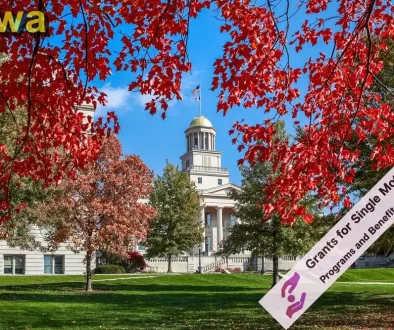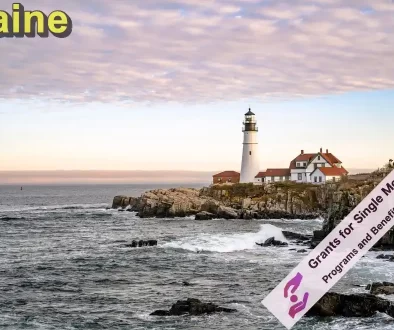Grants for Single Mothers in Alaska
Alaska is a state whose economy depends mostly on the exploitation of the oilfields discovered in the region, which have allowed the state’s inhabitants to enjoy a relatively stable financial growth. In addition to oil, Alaska also depends financially on mining. The main sources of employment for the citizens are the public sector, services, commerce, transport and public works. Like elsewhere in the country, single mothers in Alaska have access to a series of programs to which they can apply and ease their condition of sole breadwinner. These programs, to some extent, can effectively contribute to lessening the economic woes faced by the mother and the children, the main members of this unit.
As is it well known, Alaska is characterized for being the most depopulated state in the country due to its extreme, cold weather conditions. For these reasons, single mothers require even greater support from their local government than those in other locations within the United States. Below, here are some of the programs created by the Alaska government which aim to help single mothers:
Food Stamps Program
This program was conceived with the purpose of providing support to low-income single mothers and their children who can receive food using the coupons created for it. One hundred percent of the food stamp benefit is funded by the federal government. Half the cost of operating the Food Stamp Program in Alaska is covered by the state. As of now, the program, has done away with paper coupons, and has replaced them with the Alaska Quest card; through this, the Public Assistance Division distributes the amount allocated for food stamps. The amount of money that is assigned to the family unit will depend directly on the total income received by the family members. Once they have joined the program, beneficiaries can use their coupons in the stores assigned to them throughout the length and breadth of Alaska. For additional information about how to register, you can call the following telephone number: 907-465-3325. For information about the requirements to qualify for the program, please visit the following link http://dhss.alaska.gov/dpa/Pages/fstamps/default.aspx.
Summer Food Service Program
Alaska is a state that provides school-age children with food. This benefit is given to kids who are considered “low-income”. The service is given during the school year, but it doesn’t stop during the summer, since they’re aware of the children’s need for continuous, good nutrition. In response to these nutritional needs of these children, the government of Alaska also created the Summer Food Service program. Through this program, the state offers free, nutritious meals and snacks during the summer months when children are on break. For more information about the Summer Food Service, call 907-465-3316.
General Relief Assistance (GRA) Program
This program was designed to assist the basic needs of Alaskans who are not eligible for other state programs. Some examples of basic needs that are covered by this program include, but are not limited to, are shelter and public services, as well as limited assistance for clothing, transportation, food, and medical care. For more detailed information about the GRA and how to apply, call 907-465-3347. https://health.alaska.gov/dpa/pages/gra/default.aspx
Heating Assistance Program (LIHEAP)
This is a federally funded program that helps low-income households with their energy bills payments. LIHEAP is a program that was conceived to help low-income people stay warm during the winter and cool during the summer, thereby reducing the risk of health and safety problems (such as illness, fire or eviction). Alaska LIHEAP program can offer one or more of the following types of assistance:
- Assistance with the payment of your invoices for these services.
- Assistance during energy crises.
- Climatic conditioning and home repairs related to energy supply.
The person in need of assistance must visit their county’s LIHEAP office in order to request benefits from the program. At this office, they will determine the type of help that can be offered depending on their monthly income. To know more details, please visit the following link https://www.benefits.gov/benefit/1411.
Debt Payment Program
It is clear that a single mother is a person whose debts grow considerably for various reasons: she can be unemployed, suffer an accident or simply be in the process of divorce. All these reasons dramatically decrease a family income, making debt an inevitable outcome. This program was created for these mothers who have seen their debts grow exponentially and who do not count with financial relief. To confirm if your case qualifies you for this program, please visit the following link https://www.nationaldebtrelief.com/states/alaska-debtrelief/.
As it has been observed, due to the numerous conditions that make Alaska an exceptional territory, the state is concerned with providing provide single mothers the support they require in order to keep their families in good conditions.




